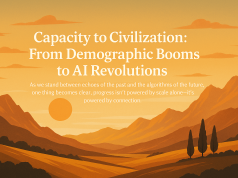The gig economy represents a seismic shift in the way the world views employment, a transformation as profound as the industrial revolution that reshaped society centuries ago. With its roots stretching back to freelance and contract work, the gig economy has burgeoned, in large part due to technological advancements, altering the employment landscape in fundamental ways that present both opportunities and dilemmas for the modern worker.
The allure of the gig economy is undeniable—flexibility, autonomy, and the potential to control one’s destiny. No longer confined to the rigidity of a 9-to-5 job, workers can now choose when, where, and for whom they work. Freelancers and independent contractors splash across a myriad of industries, from transportation and delivery services like Uber and DoorDash, to professional fields such as consulting, writing, and programming. The convenience of gig work allows for a personalized work-life balance, a commodity increasingly valued in our fast-paced society.
However, beneath the sheen of flexibility lies a harsher reality—a potential void where job security and social safety nets once were. Traditional full-time roles came with a suite of benefits: health insurance, paid leave, retirement plans, and a predictable income. These are not standard in gig work, where the next paycheck hinges on the next gig, and the notion of stability is as ephemeral as the work itself. This precariousness can lead to financial volatility and anxiety for many in the gig workforce.
Moreover, the impact on workers’ rights cannot be overlooked. The classification of gig workers as independent contractors rather than employees means fewer protections against unfair labor practices. Collective bargaining is scarce, and many of these modern laborers find themselves at the mercy of the companies that contract their services.
Yet, it is not only workers who are grappling with the ramifications of the gig economy—the corporate world, too, must navigate this novel terrain. For companies, gig workers offer a nimble workforce and reduced overhead costs, as they tend not to require the same level of investment as full-time employees. However, an overreliance on this type of labor can lead to a disengaged workforce and a plethora of legal challenges regarding worker classification.
Policymakers are now at a crossroads: how to foster the growth of this vibrant gig economy while safeguarding workers’ rights and ensuring that the labor market stays fair and equitable. The path forward likely involves a blend of innovation in labor laws, such as the creation of a ‘third’ classification for gig workers, coupled with initiatives from companies to provide benefits and stability for their gig workforce.
Ultimately, the gig economy is here to stay, and it is incumbent upon all stakeholders—workers, companies, and policymakers—toensure that it evolves in a way that continues to offer meaningful and fair work opportunities. Only through a concerted effort can we ensure that the gig economy is not just a stopgap for employment but a sustainable part of the future workforce landscape.
The Work Times recognizes the importance of this evolving employment paradigm and is committed to chronicling the journey, ensuring that voices from across this new frontier are heard and understood. As we continue to monitor the pulse of the gig economy, we invite our readers to share their experiences and thoughts on how we can all navigate the gig economy’s prospects and challenges together.

























